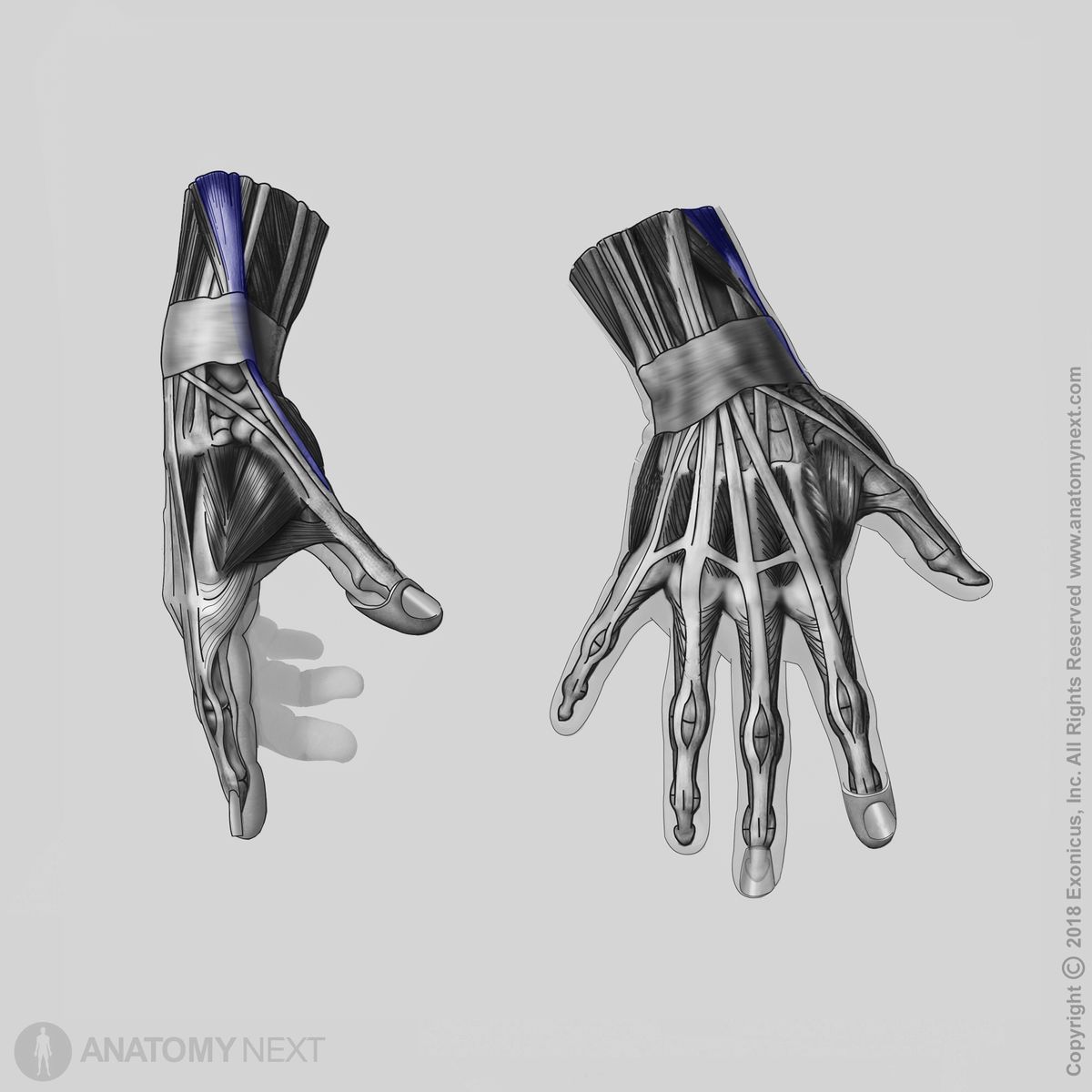- Anatomical terminology
- Skeletal system
- Joints
- Muscles
- Head muscles
- Neck muscles
- Muscles of upper limb
- Muscles of pectoral girdle
- Muscles of shoulder region
- Muscles of upper arm
- Muscles of forearm
- Anterior compartment
- Lateral compartment
- Posterior compartment
- Muscles of hand
- Thoracic muscles
- Muscles of back
- Muscles of lower limb
- Heart
- Blood vessels
- Lymphatic system
- Nervous system
- Respiratory system
- Digestive system
- Urinary system
- Female reproductive system
- Male reproductive system
- Endocrine glands
- Eye
- Ear
Abductor pollicis longus
The abductor pollicis longus (Latin: musculus abductor pollicis longus) is a flat muscle of the forearm that stretches between the ulna, radius and first metacarpal bone. It belongs to the posterior compartment of the forearm muscles, and it lies in the second (deep) layer. Besides abduction of the thumb, the abductor pollicis longus also provides thumb extension.
| Abductor pollicis longus | |
| Origin | Posterior surfaces of radius and ulna, interosseous membrane of forearm |
| Insertion | Base of 1st metacarpal bone |
| Action | Thumb abduction and extension |
| Innervation | Posterior interosseous nerve of radial nerve (C7, C8) |
| Blood supply | Anterior and posterior interosseous arteries |

Origin
The abductor pollicis longus originates from the posterior surfaces of the ulna and radius and interosseous membrane of the forearm.

Insertion
From the origin site, the abductor pollicis longus descends and forms a tendon that continues to go downward to reach the dorsal surface of the hand. The tendon of the abductor pollicis longus inserts on the base of the first metacarpal bone.

Action
The abductor pollicis longus muscle provides the abduction and extension of the thumb at the first carpometacarpal joint.

Innervation
The abductor pollicis longus is innervated by the posterior interosseous nerve - a branch of the radial nerve (C7, C8).
Blood supply
The abductor pollicis longus muscle receives arterial blood supply from the anterior and posterior interosseous arteries. Both are branches of the common interosseous artery.